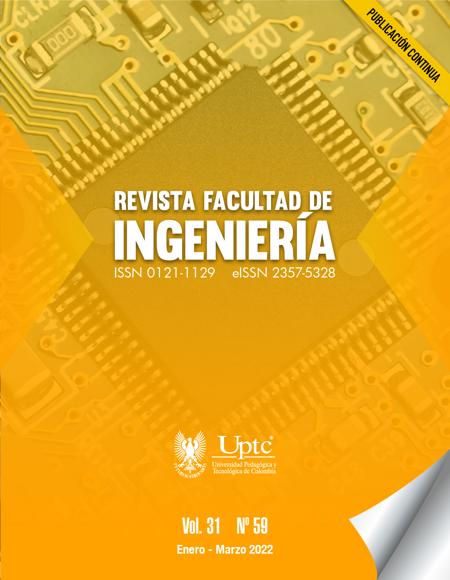Determination of the Inside Diameter of Pressure Pipes for Drinking Water Systems Using Artificial Neural Networks

Abstract
The fifth-degree polynomial equation determines the diameter in pressurized drinking water systems. The input variables are Q: flow (m3/s), H: pressure drop (m); L: pipe length (m); ε: roughness (m), ϑ: kinematic viscosity (m2/s), and Ʃk: sum of minor loss coefficients (dimensionless). After applying the energy equation for a hydraulic system composed of two tanks connected to a pipe of constant diameter and accepting the Colebrook-White and the Darcy-Weisbach equations, an undetermined expression is obtained since more unknowns than equations are established. This problem is solved by implementing a nested loop for the coefficient of friction and the diameter. This article proposes an Artificial Neural Network (ANN) implementing the Levenberg-Marquardt backpropagation method to estimate the diameter from the log-sigmoidal transfer function under stationary flow conditions. The training signals set consists of 5,000 random data that follow a normal distribution, calculated in Visual Basic (®Excel). The statistics used for the network evaluation correspond to the mean square error, the regression analysis, and the cross-entropy function. The architecture with the best performance had a hidden layer with 25 neurons (6-25-1) presenting an MSE equal to 5.41E-6 and 9.98E+00 for the Pearson Correlation Coefficient. The cross-validation of the neural scheme was carried out from 1,000 independent input signals from the training set, obtaining an MSE equal to 6.91E-6. The proposed neural network calculates the diameter with a relative error equal to 0.01% concerning the values obtained with ®Epanet, evidencing the generalizability of the optimized system.
Keywords
Artificial Neural Network, cold chain., Darcy-Weisbach, Levenberg-Marquardt, pipeline hydraulics
Author Biography
Cesar-Augusto García-Ubaque
Roles: Research, Supervision, Methodology, Validation, Writing - Review and editing.
Edgar-Orlando Ladino-Moreno
Roles: Conceptualization, Data Curation, Formal Analysis, Research, Writing - review and editing.
María-Camila García-Vaca
Roles: Research, Supervision, Methodology, Validation, Writing - Review and editing.
References
- E. Ladino, C. García, M. García, "La implicancia económica mediante Newton Rapshon para el desarrollo de un aplicación Android para el diseño del diámetro de tuberías a presión," Aglala, vol. 11, no. 1, pp. 149-168, 2020
- N. Zaragoza, J. Baeza, "Determinación del diámetro de sistemas de tuberías mediante la utilización del Visual Basic para Aplicaciones y el Método de Aproximación de Punto Fijo," Ingeniería, vol. 7, no. 2, pp. 55-64, 2003
- E. Ladino, C. García, M. García, "Darcy-Weisbach resistance coefficient determination using Newton-Raphson approach for android 4.0," Tecnura, vol. 23, no. 60, p. 52–58, 2019. https://doi.org/10.1016/j.egypro.2016.11.077 DOI: https://doi.org/10.14483/22487638.14929
- Z. Rao, F. Alvaruiz, "Use of an artificial neural network to capture the domain knowledge of a conventional hydraulic simulation model," Q IWA Publishing Journal of Hydroinformatics |, vol. 1, no. 9, 2007. https://doi.org/10.2166/hydro.2006.014 DOI: https://doi.org/10.2166/hydro.2006.014
- Y. Najjar, Quick manual for the use of ANN program TR-SEQ1, Manhattan: Department of Civil Engineering, Kansas State University, 1999
- M. T. Hagan, M. Menhaj, "Training feedforward networks with the Marquadt algorithm," IEEE Transactions on Neural Networks, vol. 5, no. 6, pp. 989-993, 1994. https://doi.org/10.1109/72.329697 DOI: https://doi.org/10.1109/72.329697
- K. Kipli, M. Mohd, S. Wan Masra, N. Zamhari, K. Lias, D. Awang , "Performance of Levenberg-Marquardt Backpropagation for Full Reference Hybrid Image," in Proceeding of the international multiconference of engineers and computer scientists, 2012, pp. 20-25
- J. Dawidowicz, "A Method for Estimating the Diameter of Water Pipes Using Artificial Neural Networks of the Multilayer Perceptron Type," Technologies and Applications, vol. 4, no. 1, pp. 26-30, 2018
- J. Dawidowicz, "Evaluation of a pressure head and pressure zones in water distribution systems by artificial neural networks," Neural Computing and Applications, vol. 30, pp. 2531–2538, 2018. https://doi.org/10.1007/s00521-017-2844-8 DOI: https://doi.org/10.1007/s00521-017-2844-8
- A. Markopoulos, S. Georgiopoulos, D. Manolakos, "On the use of back propagation and radial basis function neural networks in surface roughness prediction," Journal of Industrial Engineering International, vol. 12, pp. 389–400, 2016 DOI: https://doi.org/10.1007/s40092-016-0146-x